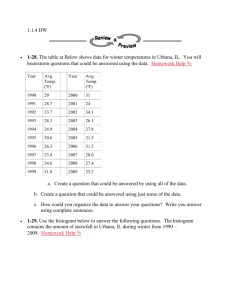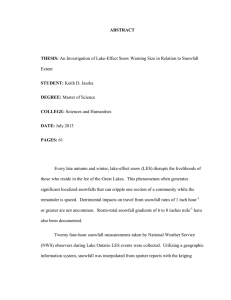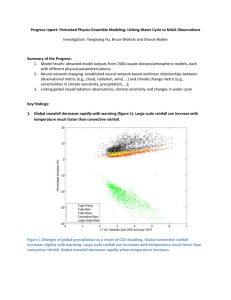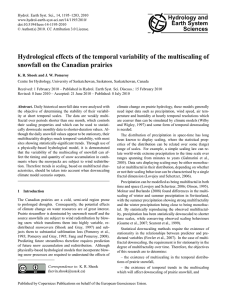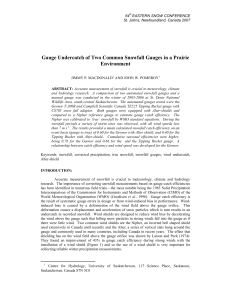Document 11896805
advertisement
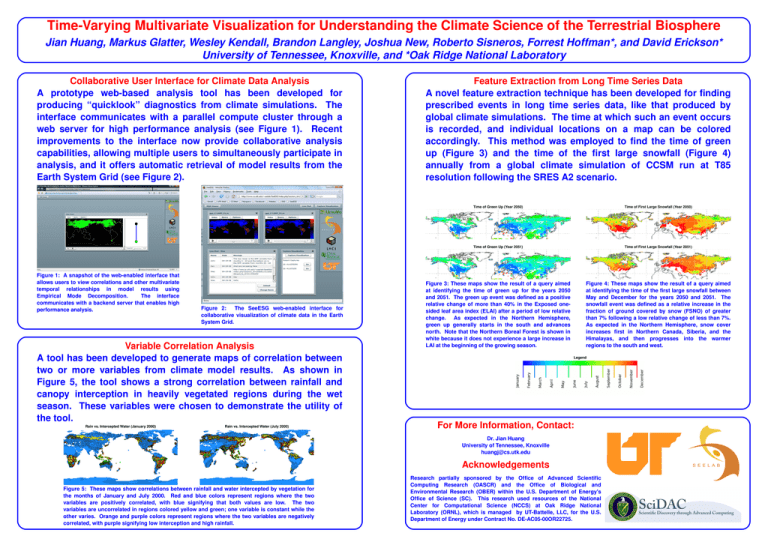
Time-Varying Multivariate Visualization for Understanding the Climate Science of the Terrestrial Biosphere Jian Huang, Markus Glatter, Wesley Kendall, Brandon Langley, Joshua New, Roberto Sisneros, Forrest Hoffman*, and David Erickson* University of Tennessee, Knoxville, and *Oak Ridge National Laboratory Collaborative User Interface for Climate Data Analysis A prototype web-based analysis tool has been developed for producing “quicklook” diagnostics from climate simulations. The interface communicates with a parallel compute cluster through a web server for high performance analysis (see Figure 1). Recent improvements to the interface now provide collaborative analysis capabilities, allowing multiple users to simultaneously participate in analysis, and it offers automatic retrieval of model results from the Earth System Grid (see Figure 2). Figure 1: A snapshot of the web-enabled interface that allows users to view correlations and other multivariate temporal relationships in model results using Empirical Mode Decomposition. The interface communicates with a backend server that enables high performance analysis. Figure 2: The SeeESG web-enabled interface for collaborative visualization of climate data in the Earth System Grid. Variable Correlation Analysis A tool has been developed to generate maps of correlation between two or more variables from climate model results. As shown in Figure 5, the tool shows a strong correlation between rainfall and canopy interception in heavily vegetated regions during the wet season. These variables were chosen to demonstrate the utility of the tool. Rain vs. Intercepted Water (January 2000) Rain vs. Intercepted Water (July 2000) Feature Extraction from Long Time Series Data A novel feature extraction technique has been developed for finding prescribed events in long time series data, like that produced by global climate simulations. The time at which such an event occurs is recorded, and individual locations on a map can be colored accordingly. This method was employed to find the time of green up (Figure 3) and the time of the first large snowfall (Figure 4) annually from a global climate simulation of CCSM run at T85 resolution following the SRES A2 scenario. Time of Green Up (Year 2050) Time of First Large Snowfall (Year 2050) Time of Green Up (Year 2051) Time of First Large Snowfall (Year 2051) Figure 3: These maps show the result of a query aimed at identifying the time of green up for the years 2050 and 2051. The green up event was defined as a positive relative change of more than 40% in the Exposed onesided leaf area index (ELAI) after a period of low relative change. As expected in the Northern Hemisphere, green up generally starts in the south and advances north. Note that the Northern Boreal Forest is shown in white because it does not experience a large increase in LAI at the beginning of the growing season. Figure 4: These maps show the result of a query aimed at identifying the time of the first large snowfall between May and December for the years 2050 and 2051. The snowfall event was defined as a relative increase in the fraction of ground covered by snow (FSNO) of greater than 7% following a low relative change of less than 7%. As expected in the Northern Hemisphere, snow cover increases first in Northern Canada, Siberia, and the Himalayas, and then progresses into the warmer regions to the south and west. Legend For More Information, Contact: Dr. Jian Huang University of Tennessee, Knoxville huangj@cs.utk.edu Acknowledgements Figure 5: These maps show correlations between rainfall and water intercepted by vegetation for the months of January and July 2000. Red and blue colors represent regions where the two variables are positively correlated, with blue signifying that both values are low. The two variables are uncorrelated in regions colored yellow and green; one variable is constant while the other varies. Orange and purple colors represent regions where the two variables are negatively correlated, with purple signifying low interception and high rainfall. Research partially sponsored by the Office of Advanced Scientific Computing Research (OASCR) and the Office of Biological and Environmental Research (OBER) within the U.S. Department of Energy's Office of Science (SC). This research used resources of the National Center for Computational Science (NCCS) at Oak Ridge National Laboratory (ORNL), which is managed by UT-Battelle, LLC, for the U.S. Department of Energy under Contract No. DE-AC05-00OR22725.
